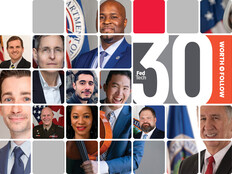From Here to There — More Efficiently
IT leaders face a quandary when trying to take advantage of technology to do federal jobs smarter, to serve taxpayers better and to run the government as a whole more efficiently. To gain productivity, they have to take risks and they have to be willing to walk away from long-held processes that don’t fit an e-government model.
White House CIO Vivek Kundra sees this as the new administration’s IT mission: “to fundamentally look at how we’re deploying technology in the federal government and rethinking what we could do in terms of finding the innovative path to lower the cost of government operations, at the same time looking at how we can fundamentally change the way the public sector interacts with the public.”
Seeking Value
It comes down to four words: change, risk, failure and success.
Ask your staff, are we doing this because it serves the agency’s mission or because it fits the organizational way of doing business? If the answer is the second of these two choices, it represents an opportunity to use technology to improve a process.
By teaming with program managers, IT shops and CTO organizations within agencies can then take step one: confront change. This can be the hardest step because processes and technologies gain constituencies just as people do. IT must demonstrate that services and ROI will improve by removing some practices and relying more on technology.
But doing something a new way — for instance, accepting applications for grants electronically or virtualizing and consolidating servers to support Social Security Administration data processing — also invites risk. A process that works, even if it’s lengthy and arduous, seems safe. Agencies must rationalize risk.
“Denial is not an effective risk management strategy,” points out Paul Ketrick of the Defense Department’s Business Transformation Agency. “There are not unlimited resources, so you are going to have to accept some sort of risk.”
Agencies have to focus less on the moment and more on the future, Ketrick recommends. They need to ask: What is the potential for an unplanned, undesirable outcome next year if we deploy this technology? Not: What happens tomorrow if we no longer maintain this information on paper? Based on the first question, agency leaders can prioritize projects, and IT can divide them into manageable initiatives with acceptable risk levels and the potential for tangible ROI.
Talk About Installed Base
10,000-plus systems and more than 24,000 websites in the federal government
SOURCE: Office of Management and Budget
As Energy Department Inspector General Gregory H. Friedman puts it: “People need to be willing to be held accountable and not fear the fact that it’s impossible to achieve perfection.” Agencies have to build up some risk tolerance to innovate and try new things, he says. In other words, don’t fear failure.
Failure can be as informative as success. In government, IT failures tend to carry a bigger penalty than in corporate culture. The budget process’s emphasis on first-year spending creates pressure to roll out extremely complex systems perfectly, from the get-go.
On the flip side, never settle on success. Instead, use it as a building block. From Kundra’s perspective, it boils down to a single question: “How can we leverage the power of technology to make sure that the country is moving in the right direction?” That takes agencies full circle to braving change, determining risk and extending their IT successes to achieve the mission. Ultimately, we will not fail.








